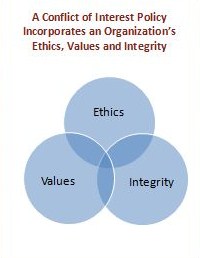- Product
- Conflict of Interest Policy Template
- Product Author
- Reviewed by
- Compliance Consultant
on May 22, 2016 - Rating
- Price
- 40
Managing Businesses Whether Regulated or Not, Where There Is A Potential Or Actual Conflict Of Interest Can Be Bad For Business, Bad For Your Reputation And Legally Costly
(As Well As Totally Reprehensible)
Whereas the normal definition of Conflict of Interest means;
1.A situation that has the potential to undermine the impartiality of a person because of the possibility of a clash between the person’s self-interest and professional interest or public interest.
2.A situation in which a party’s responsibility to a second-party limits its ability to discharge its responsibility to a third-party.
The regulated UK Financial Services world goes even further in spelling it out.
The FCA Systems & Controls (SYSC) Handbook Chapter 10 provides the rules and guidance for regulated financial services firms whereby “A firm must take all reasonable steps to identify conflicts of interest between:
(1) the firm, including its managers, employees and appointed representatives (or where applicable, tied agents), or any person directly or indirectly linked to them by control, and a client of the firm; or
(2) one client of the firm and another client;
that arise or may arise in the course of the firm providing any service referred to a firm which provides services to its clients in the course of carrying on regulated activities or ancillary activities or providing ancillary services (but only where the ancillary services constitute MiFID business). It also applies to a management company.”

The types of conflict that this may cover is determined by whether the firm or a relevant person, or a person directly or indirectly linked by control to the firm:
(1) is likely to make a financial gain, or avoid a financial loss, at the expense of the client;
(2) has an interest in the outcome of a service provided to the client or of a transaction carried out on behalf of the client, which is distinct from the client’s interest in that outcome;
(2A) in the case of a management company providing collective portfolio management services for a UCITS scheme, (2) also applies where the service is provided to, or the transaction is carried out on behalf of, a client other than the UCITS scheme;
(3) has a financial or other incentive to favour the interest of another client or group of clients over the interests of the client;
(4) carries on the same business as the client; or in the case of a management company, carries on the same activities for the UCITS scheme and for another client or clients which are not UCITS schemes; or
(5) receives or will receive from a person other than the client an inducement in relation to a service provided to the client, in the form of monies, goods or services, other than the standard commission or fee for that service.
Conflicts Of Interest Can Do/Can’t Do
It is always easy for regulators and firms to spell out what people cannot do and but at Compliance Consultant we like to be more helpful.
Policy Contents
The actual contents of the Conflicts of Interest policy should include among others,
(a) the specific services and activities carried out by or on behalf of the firm or management company, the circumstances which constitute or may give rise to a conflict of interest entailing a material risk of damage to the interests of one or more clients; and it must specify procedures to be followed and measures to be adopted in order to manage such conflicts.
The procedures should be designed to ensure that relevant persons engaged in different business activities involving a conflict of interest of the kind specified in above and carry on those activities at a level of independence appropriate to the size and activities of the firm or the management company and of the group to which either of them respectively belongs, and to the materiality of the risk of damage to the interests of clients; and include any or all of the following as are necessary and appropriate for the firm or the management company to ensure the requisite degree of independence:
(i) effective procedures to prevent or control the exchange of information between relevant persons engaged in activities involving a risk of a conflict of interest where the exchange of that information may harm the interests of one or more clients; i,e, Chinese Walls
(ii) the separate supervision of relevant persons whose principal functions involve carrying out activities on behalf of, or providing services to, clients whose interests may conflict, or who otherwise represent different interests that may conflict, including those of the firm;
(iii) the removal of any direct link between the remuneration of relevant persons principally engaged in one activity and the remuneration of, or revenues generated by, different relevant persons principally engaged in another activity, where a conflict of interest may arise in relation to those activities;
(iv) measures to prevent or limit any person from exercising inappropriate influence over the way in which a relevant person carries out services or activities; and
(v) measures to prevent or control the simultaneous or sequential involvement of a relevant person in separate services or activities where such involvement may impair the proper management of conflicts of interest.





